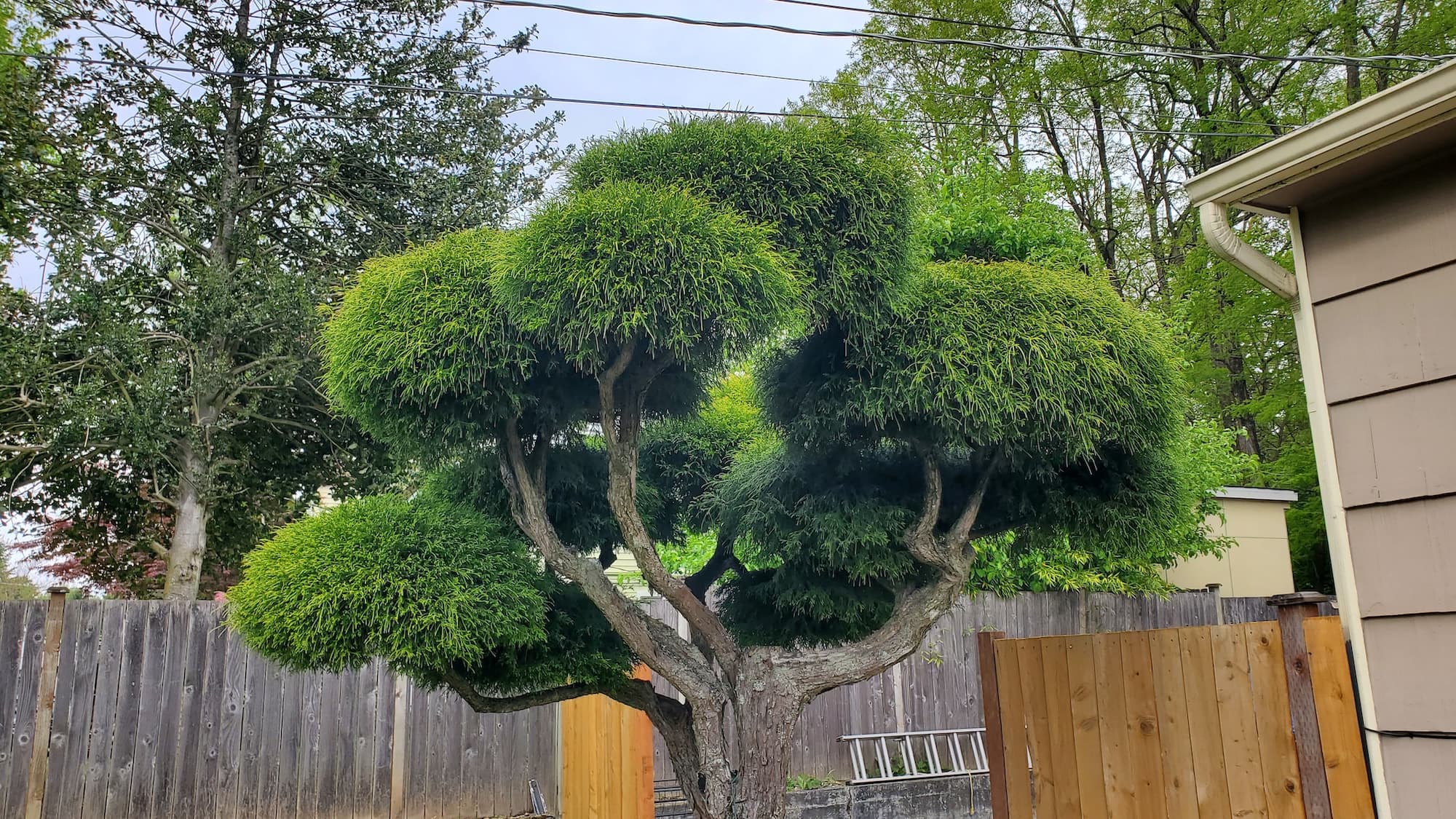West Seattle Light Trim of Shrubs
Homeowner’s Issue
West Seattle yards get dense fast. We see compacted loamy soils on flatter lots and thin, gravelly pockets on bluffs toward Alki. Heavy winter rain, frequent overcast, and summer dry spells create a cycle: shrubs flush late spring growth, then struggle in July–August drought without deep water. Shaded corners by cedar fences and lots under maples develop moss and ivy pressure; sunny exposures on south-facing slopes push drought-tolerant, woody growth that needs tip pruning.
Common problems here are clogged sight lines on sloped driveways (Admiral and Fauntleroy homes), root crowding from compacted planting strips, and hedge raggedness after salmonberry or vine maple sucker growth. HOA rules in some Junction and Morgan Junction neighborhoods prefer neat, low profiles; steep properties need careful drop management to avoid runoff into curb cuts. Drainage matters—a hard-packed bed will hold water at the base of shrubs and encourage root rot, while steep beds shed too quickly and scorch roots in summer.
We plan trims around Seattle’s rainfall seasons: light formative pruning late winter, minor shaping in early summer, and a tidy before fall rains. Sustainable practices only—no herbicides—keep your soil and shoreline-friendly runoff clean and reduce rework from resprouting invasives.
Our Quality Service
We do targeted, low-impact trims focused on plant health and long-term neatness. Typical toolkit: bypass pruners, loppers, hand saws, battery pole pruners, mulching forks, and a chipper for large trimmings. Jobs are staged to minimize soil compaction—walk boards on sour slopes and small crews for tight access yards.
What we do:
- Assess plant health and root/drainage issues on site or from photos.
- Remove dead wood, thin congested centers, and lightly shape to natural form.
- Clean and grade beds to improve surface drainage and reduce moss buildup.
- Chip or bag clippings; offer green-bin or haul-away options.
Timelines: a standard front-yard light trim takes 1–3 hours; larger properties or steep banks take a half- to full-day. We schedule around weather—avoid heavy rain days and target late winter/early spring and late summer tune-ups. We do not use chemical herbicides—organic methods only (hand-pull, smothering, increased mulch, and targeted cultural controls).
Benefits:
- Safer sightlines and access on slopes and driveways.
- Healthier shrubs with reduced pest and disease risk.
- Lower maintenance between visits and improved curb appeal.
- Water-wise care and compliance with local runoff considerations.
What’s Included
- On-site assessment and short plan.
- Light pruning and shaping for natural form.
- Removal of dead wood and crossing branches.
- Clean-up: chipping, hauling, or green-bin prep.
- Bed rake and light edging around shrub lines.
Options / Upgrades:
- Mulch refresh (local composted arborist mulch) + fabric on request.
- Organic weed control: hand-weeding, smothering, or targeted mulching.
- Haul-away vs. green-bin drop-off (you choose).
- Small regrades to improve drainage (extra charge).
- New plant suggestions using Pacific Northwest natives or drought-tolerant shrubs.
Before & After / Expectations
Expect some noise from battery trimmers and a chipper if large limbs are removed. We may need gate access and a short hose hookup for cleanup; narrow gates or multi-flight stairs can add time. Typical cleanup leaves beds tidy; chips can be left on-site as mulch by request.
Care tips for West Seattle:
- Water deeply in early morning during July–September dry spells; soak every 7–14 days for established shrubs.
- Pull persistent weeds in early spring before seed drop; repeat light weeding in early fall.
- Moss thrives on shaded, compacted spots—improve drainage, thin canopy to increase light, and add mulch after aeration.
- For ivy or English laurel, regular hand-pulling and root removal prevent reestablishment (no herbicides used).
FAQs
Q: How long will a light trim take?
A: Most standard front yards are 1–3 hours. Slopes or larger beds can take a half- to full-day.
Q: Do you use chemicals for weeds?
A: No. We use hand tools, smothering, and mulch-based cultural methods only—no herbicides.
Q: Will trimming damage my shrubs?
A: We do conservative cuts to preserve natural habit. Heavy shaping or rejuvenation is quoted separately.
Q: What if I want the clippings hauled away?
A: We offer green-bin prep or haul-away at time of service; tell us your preference during estimate.
Q: When is the best time to trim?
A: Late winter/early spring for most shrubs; light summer shaping and a pre-wet-season tidy in early fall.
Call to Action
West Seattle homeowners—ready for a cleaner, safer yard near Alki, Admiral, or Lincoln Park? Book a quick photo estimate or a free onsite consult. We schedule fast and work with local conditions in mind.
Email: neatandtidyseattle@gmail.com
Phone: 206-538-9344
Fast scheduling • sustainable methods • local West Seattle pros.










